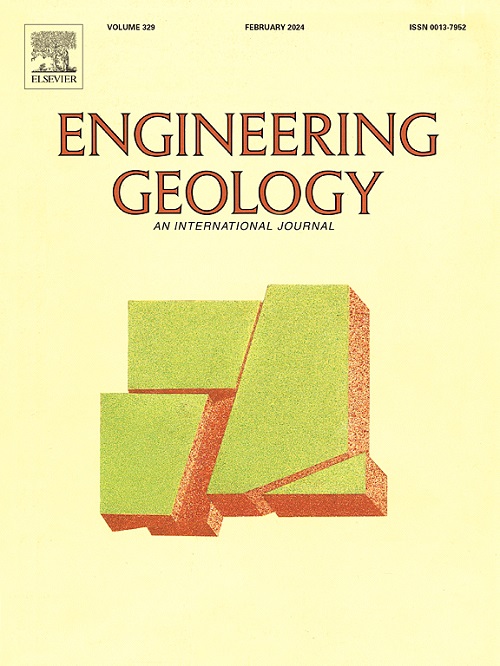Optimization study on separate-layer fracturing of a coal–rock composite based on inter-fracture interference effect
IF 6.9
1区 工程技术
Q1 ENGINEERING, GEOLOGICAL
引用次数: 0
Abstract
Optimization measures that can improve the effectiveness of fracturing coal–rock composites through separate-layer fracturing under the effect of inter-fracture interference are required. In this context, a reservoir–fracture interference extension model was established for coal–rock composites based on the extended finite element method by embedding cohesive units. Hydraulic fracturing simulations were conducted under different geo-stresses and fracturing sequences, and a comprehensive assessment of the fracturing effect was provided. The results showed that the high pore stress on both sides of the first fracture can induce the expansion of secondary fractures toward the interface with a greater degree of deflection. The difficulty of fracture initiation in the rock formation increased in secondary fracturing, the fracture initiation pressure decreased in the coal seam during secondary fracturing. An appropriate reduction in the fracture spacing can enhance the inter-fracture interference effect and thus enrich the morphology of the hydraulic fracture network. In the separate-layer fracturing of coal composite reservoirs, the synergistic effect of interlayer physical differences and inter-fracture interference effect can be utilized to fracture the rock formation after fracturing the coal seam; this induces the rock fractures to be captured by structurally weak surfaces. Repeated fracturing of the coal seam and utilization of the rupture expansion effect of the rock roof to form long-term stable fractures can be useful for further strengthening the transformation effect of the coal seam. This study can provide some theoretical support for the stratified co-mining of coalbed methane in deep coal reservoirs.
求助全文
约1分钟内获得全文
求助全文
来源期刊

Engineering Geology
地学-地球科学综合
CiteScore
13.70
自引率
12.20%
发文量
327
审稿时长
5.6 months
期刊介绍:
Engineering Geology, an international interdisciplinary journal, serves as a bridge between earth sciences and engineering, focusing on geological and geotechnical engineering. It welcomes studies with relevance to engineering, environmental concerns, and safety, catering to engineering geologists with backgrounds in geology or civil/mining engineering. Topics include applied geomorphology, structural geology, geophysics, geochemistry, environmental geology, hydrogeology, land use planning, natural hazards, remote sensing, soil and rock mechanics, and applied geotechnical engineering. The journal provides a platform for research at the intersection of geology and engineering disciplines.
 求助内容:
求助内容: 应助结果提醒方式:
应助结果提醒方式:


